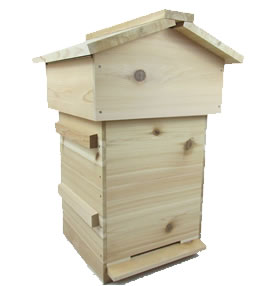How Long Does a Beehive Last? Exploring Beehive Lifespan
The lifespan of a beehive can vary depending on several factors, including hive construction, environmental conditions, pest and disease management, and beekeeping practices. While some beehives may last for several years with proper care and maintenance, others may need to be replaced or repaired more frequently.
Factors Affecting Beehive Lifespan
Several factors can influence the lifespan of a beehive:
- Hive Materials: The type of materials used in hive construction can impact longevity. Hives made from durable, weather-resistant materials like cedar or cypress tend to last longer than those made from cheaper, less durable materials.
- Environmental Conditions: Exposure to harsh weather conditions, such as extreme heat, cold, rain, and humidity, can affect hive durability. Hives located in regions with mild, temperate climates may last longer than those in areas with more severe weather.
- Pest and Disease Management: Effective pest and disease management practices can help prolong hive lifespan by reducing the risk of infestations and infections that can weaken or destroy colonies.
- Beekeeping Practices: Regular hive inspections, maintenance, and timely interventions can help identify and address issues that could compromise hive health and longevity.
- Queen Bee Health: A healthy, productive queen bee is essential for maintaining hive strength and vitality. Regular queen assessments and replacements may be necessary to ensure colony longevity.
- Swarming: Swarming is a natural process in which a colony divides and creates a new hive. While swarming is a sign of a healthy, thriving colony, it can also result in the loss of bees and the need to establish new hives.
Typical Lifespan of a Beehive
On average, a well-maintained beehive can last anywhere from 5 to 20 years or more. However, hive lifespan can vary widely depending on the factors mentioned above. Some hives may require replacement or repair after just a few years, while others may remain in good condition for decades.
Conclusion
While there is no fixed lifespan for a beehive, beekeepers can take steps to maximize hive longevity and ensure the health and well-being of their colonies. By using quality materials, implementing effective management practices, and regularly monitoring hive health, beekeepers can help prolong hive lifespan and support thriving bee populations for years to come.
Ultimately, the key to extending hive lifespan lies in careful attention to detail, proactive management, and a deep understanding of bee biology and behavior.



